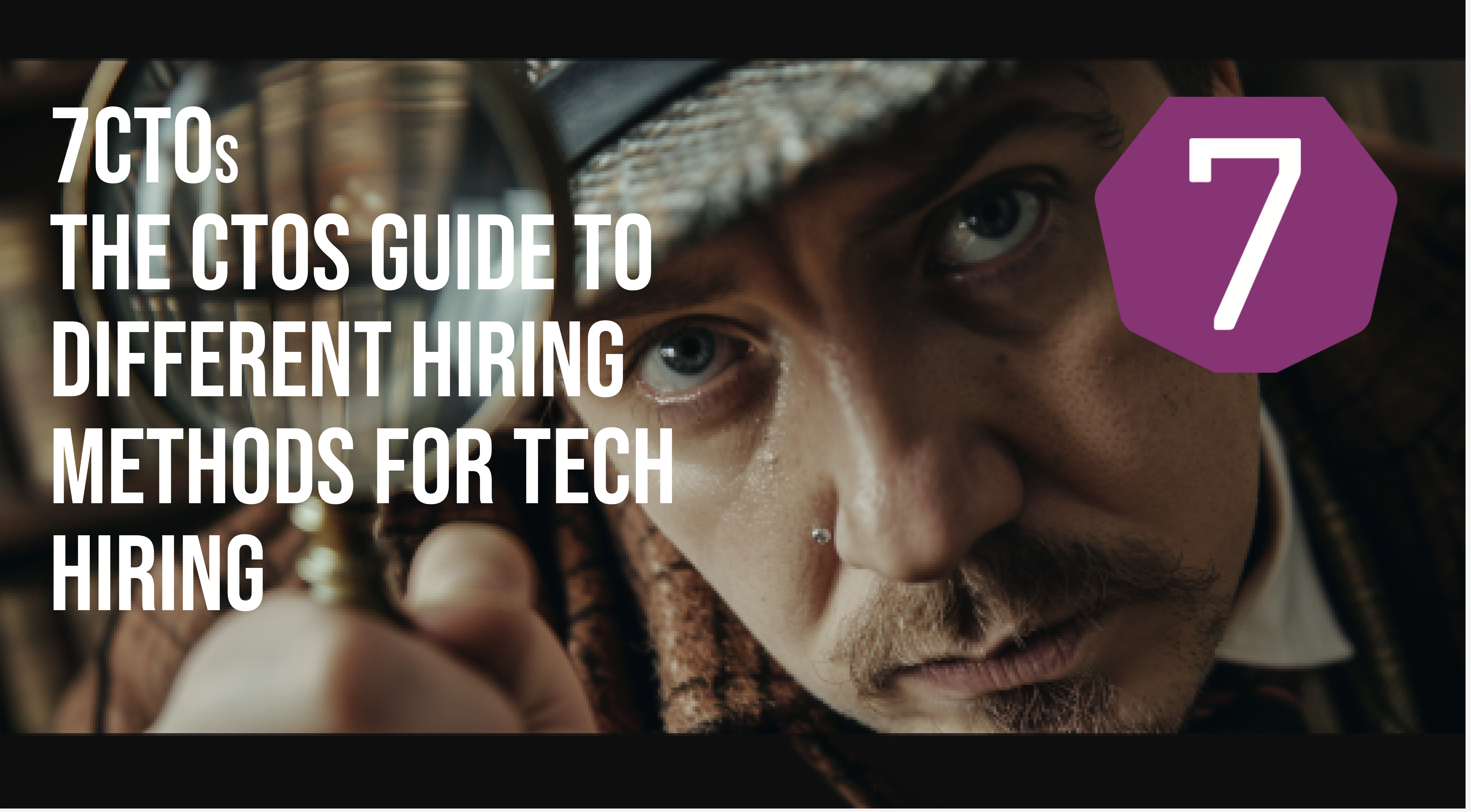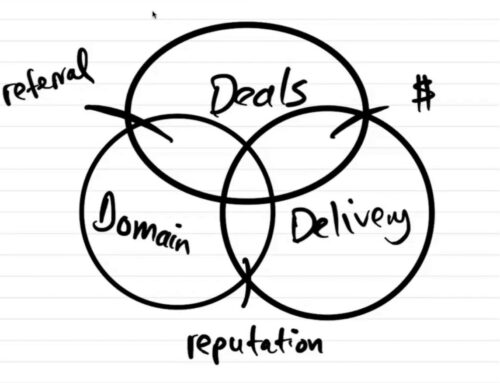Introduction
As Paul Johnson discussed in a 7CTOs session, over the years, the hiring process has been delegated to the HR department. The technical team emails HR with a list of requirements, HR sources resumes and passes that along for the technical team to review.
In smaller companies, the options are limited to working with an outside recruiting service, or pounding the sidewalks in our best attempts at being a networker.
In this article we take a look at taking a step back from the tactical towards more strategic thinking about the hiring process.
Importance
Why is this important to the CTO?
According to Paul, to many, the hiring process is something the CTO has to do vs. seeing it as establishing a competitive advantage. In addition, if hiring feels like something the CTO is not great at, they may be tempted to push it down lower on the list of priorities.
If we view the hiring process as a problem we need to solve, we lose out on the opportunity to cast a vision that attracts the candidates we didn’t even know existed.
“The CTO uses their voice to guide the right people into the applicant pool.” ~ Agustin Lebron
Whether we are a CTO or Sr. Engineer, it is important for us to bring new hires up to speed. Even more important is the joy at seeing them excel beyond our level of expertise.
As CTOs we may often see ourselves as building products or services. But there is an inflection point where we move from building products directly to building teams.
The CTO that excels at the hiring process is the one that considers that hiring is a multi year process. In fact, if you get budget approved post haste, you’re probably going to
1. Pay a premium to enlist the help of a recruiter
2. Make suboptimal hires because you’re in a rush
The CTO should start viewing themselves as a representation of the company and the team they are leading. No longer focused on the task of adding warm bodies, but a careful curator of those they have attracted to come work with them.
In order to attract the right talent, the CTO should be a leader in the following steps:
-Consider the larger picture, where the company is headed
-Seek alignment on the larger goals from the executive leadership team
-Build the team around the company’s competitive edge
💡 Build an interview plan. Have a systematic way of listing the skills of must haves and then a list of abilities and preferences you’re looking for. Perhaps use a spreadsheet. Build questions around that plan with some scoring mechanism.
Implementation
What resources and help is out there for the CTO to get support on this?
Marketing departments are really good at crafting stories to your customers. The C-Suite needs to focus on your story to investors. But who is helping you craft your story to your current and prospective employees?
LinkedIn stats show that the number one thing candidates want to know is:
1. What interesting problems are they going to work on
2. Who are they going to solve the problems with
3. Is there clarity on the vision of your hiring process?
4. Are your values embodied in your hiring process?
5. Is your hiring process a transparent view into your company culture?
The CTOs Guide to Different Hiring Methods for Tech Hiring
In today’s dynamic and competitive tech industry, building a high-performing team is essential for driving innovation, delivering exceptional products, and staying ahead of the curve. As the leader responsible for the technical direction of a company, the Chief Technology Officer (CTO) plays a pivotal role in shaping the team and selecting the right talent acquisition strategy.
In this extensive guide, we will explore various hiring methods available to CTOs, examining their advantages, disadvantages, and suitability for different organizational contexts. Drawing insights from industry experts, real-world experiences, scholarly research, and authoritative articles, we aim to provide CTOs with the knowledge and tools necessary to make informed decisions that align with their company’s goals and values.
Understanding Different Hiring Methods
1. In-House Hiring
In-house hiring, also known as traditional hiring, involves recruiting full-time employees to work onsite within the company’s premises. This approach offers several advantages, including better integration into the company culture, enhanced collaboration, and greater control over the hiring process. Additionally, in-house hires are often more committed and aligned with the company’s long-term objectives.
However, in-house hiring can be time-consuming and resource-intensive. It requires significant investment in recruiting efforts, from sourcing candidates to conducting interviews and onboarding new hires. Moreover, attracting top talent solely through in-house hiring may limit access to specialized skills and expertise, particularly in niche domains where competition for talent is high.
2. Outsourcing
Outsourcing is a popular alternative to in-house hiring, wherein companies partner with external vendors or freelancers to fulfill specific roles or projects. This approach offers flexibility, scalability, and cost-effectiveness, as companies can leverage diverse talent pools without the overhead of maintaining full-time staff.
Outsourcing is particularly advantageous for short-term projects, specialized tasks, or roles that require niche skills not readily available in-house. It allows companies to access global talent markets and tap into specialized expertise without geographical constraints. However, outsourcing comes with its challenges, such as communication barriers, cultural differences, and potential risks to data security and intellectual property.
3. Freelancing Platforms
Freelancing platforms have gained popularity in recent years as a convenient way to access on-demand talent for short-term projects or tasks. Platforms like Upwork, Freelancer, and Toptal connect companies with freelance professionals across various domains, including software development, design, and digital marketing.
Freelancing platforms offer a vast pool of talent with diverse skills and experiences, allowing companies to find the right match for their specific requirements quickly. Moreover, the pay-as-you-go model provides cost savings and flexibility, as companies can scale their workforce according to project needs. However, quality control, reliability, and continuity of work may pose challenges when working with freelance professionals scattered across different time zones and geographies.
4. Staff Augmentation
Staff augmentation involves supplementing an existing in-house team with external resources, such as contract workers or consultants, to address skill gaps or meet increased demand. This hybrid approach combines the benefits of in-house expertise with the flexibility of external talent, allowing companies to scale their teams dynamically while retaining control over project management and delivery.
Staff augmentation is well-suited for companies seeking to augment their core team with specialized skills or domain knowledge for specific projects or initiatives. It offers greater agility and responsiveness to changing market demands without the overhead of long-term commitments or permanent hires. However, effectively integrating external resources with the existing team requires careful planning, communication, and coordination to ensure seamless collaboration and alignment with project objectives.
5. Hybrid Models
Hybrid models combine various hiring methods to leverage the strengths of each approach while mitigating their respective limitations. For example, a company may maintain a core team of full-time employees for critical functions while supplementing it with outsourced specialists for specialized projects or peak workloads.
By adopting a hybrid approach, CTOs can optimize resource allocation, manage costs, and adapt to evolving business needs more effectively. This flexible and adaptive model allows companies to scale their teams dynamically, tap into diverse talent pools, and maintain a competitive edge in a rapidly changing market landscape.
Determining the Best Team Model for Tech Hiring
Choosing the right hiring method depends on various factors, including the company’s size, stage of growth, budget constraints, project requirements, and long-term objectives. CTOs must carefully evaluate these factors and weigh the pros and cons of each approach to make informed decisions that align with their organization’s goals and values.
1. Business Objectives
Align the hiring strategy with the organization’s short-term and long-term goals to ensure that the tech team supports overall business objectives.
2. Budget and Resources
Evaluate the cost implications of different hiring methods and assess the organization’s financial resources to determine the most cost-effective approach.
3. Project Requirements
Analyze the scope, complexity, and duration of projects to identify the skills and expertise needed to deliver successful outcomes.
4. Talent Availability
Assess the availability of talent both locally and globally to determine the feasibility of different hiring methods.
5. Culture and Values
Consider the organization’s culture and values to ensure that the hiring method aligns with the company’s ethos and promotes a positive work environment.
Moreover, CTOs can benefit from networking with peers and seeking expert guidance to navigate the complexities of tech hiring. Joining CTO peer groups and engaging in CTO coaching programs can provide valuable insights, best practices, and peer support to optimize hiring strategies and foster professional growth.
CTO peer groups and CTO coaching programs offer opportunities for CTOs to connect with like-minded professionals, share experiences, and learn from industry leaders. By leveraging these resources and staying abreast of emerging trends and best practices, CTOs can build high-performing teams that drive innovation, growth, and success in the digital age.
Insights from Proxify: The CTO’s Guide to Different Hiring Models
Proxify, a tech hiring platform, provides valuable insights into different hiring models and their implications for CTOs. According to Proxify’s research, CTOs face a myriad of challenges when it comes to hiring tech talent, including talent scarcity, competition, and evolving skill requirements.
Proxify highlights several hiring models that CTOs can explore to overcome these challenges and build resilient tech teams:
– Distributed Teams: Leveraging remote talent allows CTOs to tap into global talent pools and access specialized skills without geographical constraints. Remote teams offer flexibility, scalability, and cost savings, but require effective communication and collaboration tools to ensure productivity and cohesion.
– Project-Based Hiring: Adopting a project-based hiring model enables CTOs to engage with freelancers or agencies on a project-by-project basis, minimizing overhead costs and mitigating risks. This approach offers flexibility, agility, and access to specialized expertise, but requires clear project scope, milestones, and deliverables to ensure successful outcomes.
– Outsourced Development: Partnering with external development agencies or outsourcing firms can accelerate product development, reduce time-to-market, and mitigate technical risks. However, CTOs must carefully vet potential partners, establish clear communication channels, and define project expectations to ensure alignment with business goals and quality standards.
– Managed Teams: Engaging with managed service providers or talent agencies allows CTOs to offload recruitment, onboarding, and management responsibilities while retaining control over project delivery and outcomes. Managed teams offer scalability, expertise, and cost savings, but require strong vendor management and governance frameworks to ensure accountability and transparency.
By exploring these hiring models and understanding their implications, CTOs can navigate the complexities of tech hiring more effectively and build high-performing teams that drive innovation, growth, and competitive advantage.
Additional Insights from Tech Lead Hub: Finding the Perfect Fit for Your Technology Team
Tech Lead Hub, an authoritative platform for technology leaders, offers valuable insights into finding the perfect fit for your technology team through effective hiring models. According to Tech Lead Hub’s research and analysis, CTOs must consider various factors when evaluating hiring models, including:
– Culture Fit: Hiring models should align with the company’s culture, values, and working
norms to ensure cohesion and collaboration within the team.
– Scalability: The chosen hiring model should accommodate the company’s growth trajectory and scalability requirements, allowing for seamless expansion or contraction of the team as needed.
– Cost-effectiveness: CTOs must weigh the costs and benefits of different hiring models, considering factors such as recruitment expenses, overhead costs, and long-term ROI.
– Risk Management: Assessing and mitigating risks associated with each hiring model, such as talent turnover, project delays, and regulatory compliance, is essential for ensuring project success and business continuity.
Tech Lead Hub emphasizes the importance of aligning hiring models with the company’s strategic objectives, technology roadmap, and talent acquisition strategy. By adopting a holistic approach to tech hiring and leveraging the right mix of hiring models, CTOs can build resilient, adaptable, and high-performing technology teams that drive innovation and business growth.
Insights from Medium: The CTO’s Guide to Hiring Models
Medium’s Tech Lead Hub section provides additional insights into the CTO’s guide to hiring models. The article emphasizes the importance of finding the perfect fit for your technology team through effective hiring strategies. It offers practical advice and actionable tips for CTOs seeking to navigate the complexities of tech hiring and build high-performing teams.
According to the Medium article, CTOs must adopt a strategic approach to hiring that aligns with the company’s goals, values, and culture. They should evaluate various hiring models based on factors such as scalability, cost-effectiveness, and risk management to determine the best fit for their organization.
The Medium article explores the following key considerations for CTOs when evaluating hiring models:
– Talent Acquisition Strategy: CTOs must develop a comprehensive talent acquisition strategy that aligns with the company’s business objectives and technology roadmap. This strategy should encompass sourcing, screening, and selecting candidates using a combination of in-house hiring, outsourcing, freelancing, or other methods.
– Skill Requirements: CTOs should assess the specific skill requirements of each project or initiative and determine whether in-house expertise is sufficient or external resources are needed to fill skill gaps. They should also consider the level of expertise, experience, and specialization required for successful project execution.
– Cost-Benefit Analysis: CTOs must conduct a thorough cost-benefit analysis of different hiring models to assess their financial implications and long-term ROI. This analysis should account for recruitment expenses, overhead costs, productivity gains, and potential risks associated with each hiring method.
– Risk Management: CTOs should identify and mitigate risks associated with each hiring model, such as talent turnover, project delays, and quality assurance issues. They should establish clear communication channels, performance metrics, and governance frameworks to ensure accountability and transparency throughout the hiring process.
By considering these key factors and leveraging insights from industry experts and authoritative sources, CTOs can develop effective hiring strategies that drive organizational success and foster professional growth.
Conclusion
In conclusion, selecting the right hiring method is a strategic imperative for CTOs seeking to build and sustain a competitive advantage in today’s technology-driven business environment. By understanding the nuances of different hiring methods, evaluating their suitability for specific contexts, and leveraging insights from industry experts and authoritative sources, CTOs can make informed decisions that drive organizational success and foster professional growth.
– Source: RemoteBase Blog – How CTOs Determine the Best Team Model for Tech Hiring
– Source: Proxify – Insight: The CTO’s Guide to Different Hiring Models
– Source: Medium – Tech Lead Hub: The CTO’s Guide to Hiring Models
This comprehensive guide is intended to provide CTOs with actionable insights and practical guidance for navigating the complexities of tech hiring. It serves as a roadmap for building high-performing teams that drive innovation, growth, and success in the digital age.




